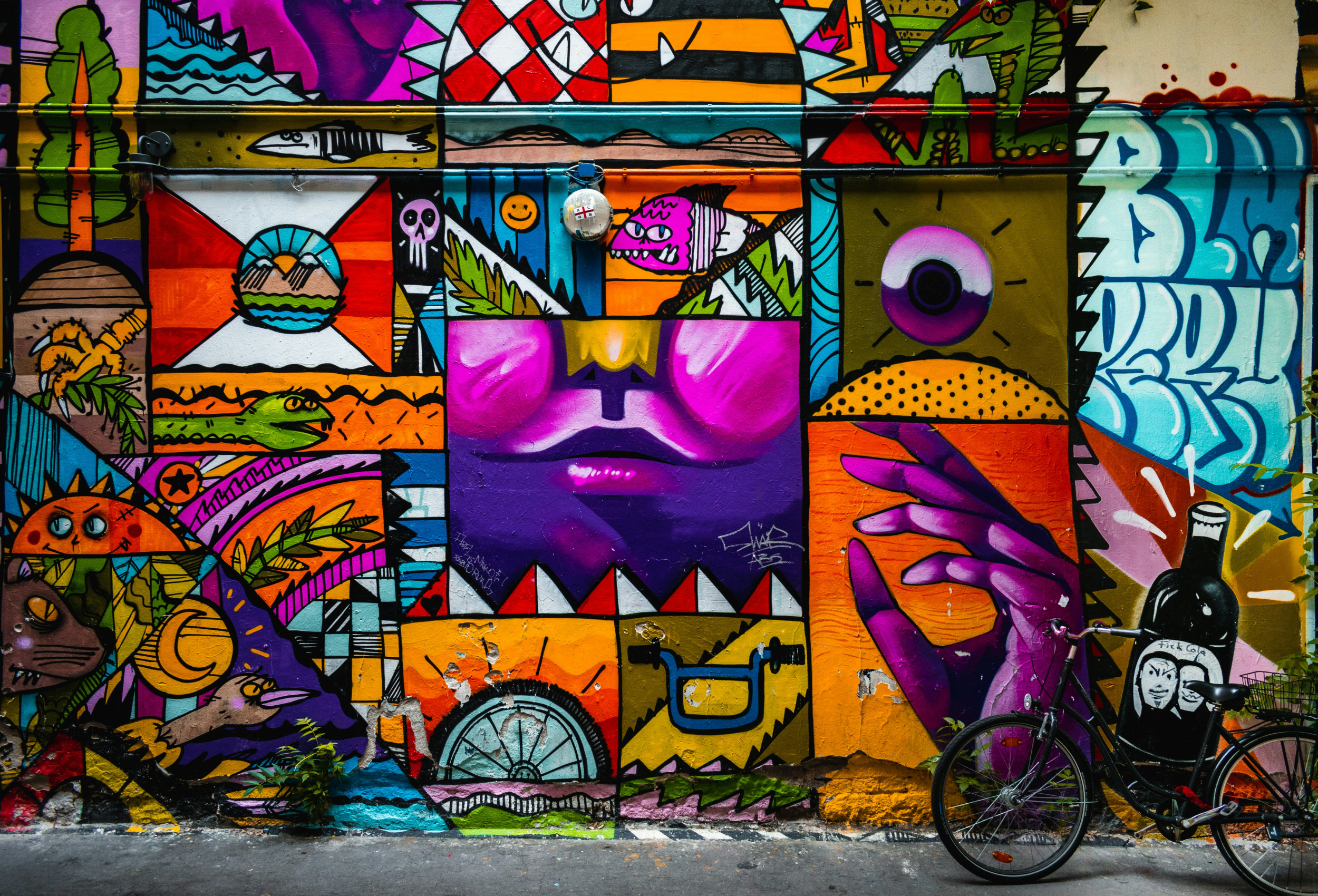Graffiti is one of the most iconic and controversial forms of urban artistic expression. Often created without formal permission, graffiti transforms public walls and infrastructure into canvases for identity, protest, art, and rebellion. Rooted in youth culture and hip-hop movements, it has evolved from simple name-tagging into a complex, global art form that challenges conventional ideas of ownership, space, and communication.
Introduction to Graffiti
The modern graffiti movement began in the late 1960s and early 1970s, particularly in New York City, where young people started writing their names or nicknames (known as “tags”) on subway cars and buildings. These writers aimed to gain recognition through repetition and style. As the movement grew, so did the complexity of the work—tags evolved into “throw-ups,” “pieces,” and murals, becoming more elaborate, colorful, and artistic.
Over time, graffiti developed into a unique visual language with its own styles, rules, and hierarchies. Though still often associated with illegality and vandalism, graffiti has also entered galleries, museums, and mainstream art markets, challenging its underground roots.
Defining the Style
Graffiti is defined by its bold use of lettering, color, and placement. At its core, it revolves around writing—artists stylize letters, names, and messages in intricate ways, often using exaggerated curves, arrows, 3D effects, and shadows. Key graffiti styles include:
- Tag: The most basic and fastest form, usually a signature or pseudonym written in one color.
- Throw-up: A step above a tag—usually bubble letters done quickly with two or three colors.
- Piece (short for “masterpiece”): A large, complex work involving multiple colors, backgrounds, and effects.
- Wildstyle: Highly stylized and complex lettering that is often hard to read—meant more for insiders who understand the graffiti scene.
- Character or Mural: Some graffiti artists incorporate cartoon-style characters, portraiture, or abstract elements alongside their lettering.
Tools and Materials
Graffiti artists typically work with tools that allow for fast, large-scale, and expressive mark-making. Common materials include:
- Spray Paint: The primary medium of graffiti. Artists use various caps (nozzles) to control line thickness and spray texture.
- Markers and Paint Pens: Used for tagging or sketching designs before painting.
- Stencils: While less common in traditional graffiti, some artists incorporate stencil techniques for clean, repeatable shapes or messages.
- Rollers and Brushes: Sometimes used for large background fills or murals.
Artists also carry masks and gloves to protect themselves from paint fumes and chemicals, especially when working in enclosed spaces or at night.
Graffiti in Street Culture
Graffiti is more than just visual art—it’s a form of communication and identity. It often represents social or political commentary, resistance to authority, or the desire for visibility in a society that may otherwise ignore marginalized voices. Some graffiti crews (or “crews”) operate in tight-knit groups with codes of conduct, turf, and signature styles.
Notable figures like Taki 183, Dondi, Lady Pink, and Seen helped shape graffiti’s evolution, while contemporary artists such as RETNA and GOREY blend traditional graffiti with calligraphy, fine art, and fashion.
Conclusion
Graffiti is raw, energetic, and ever-evolving. It reflects the pulse of urban life—sometimes loud and defiant, other times poetic or abstract. Whether seen as vandalism or legitimate art, graffiti remains one of the most vibrant and powerful voices in contemporary street culture.
